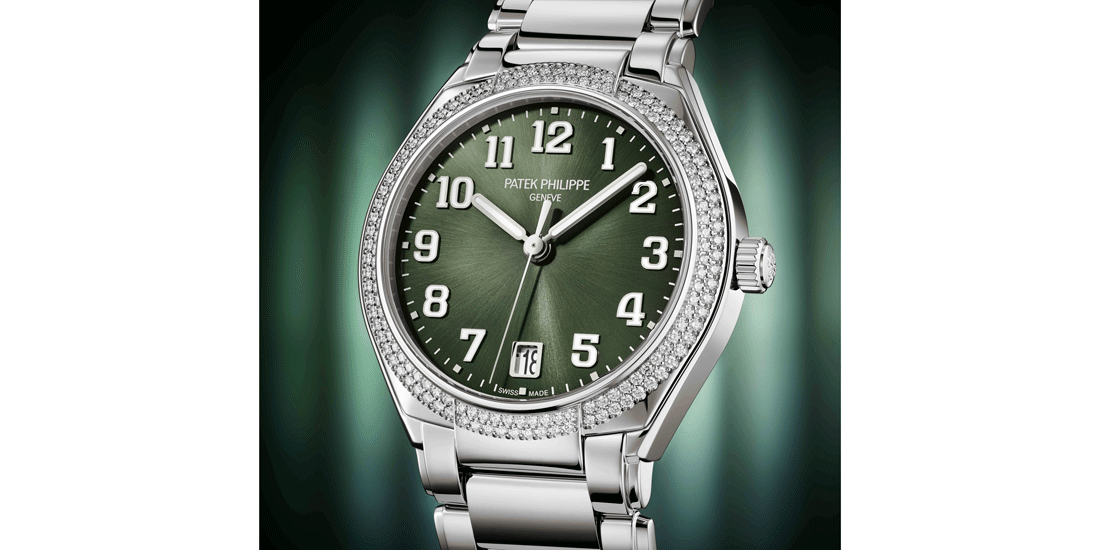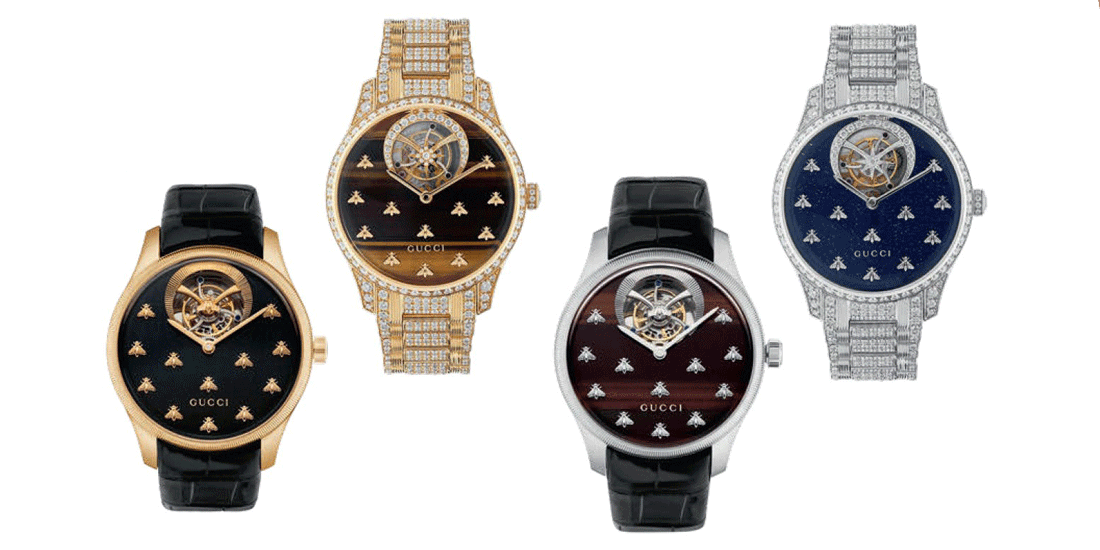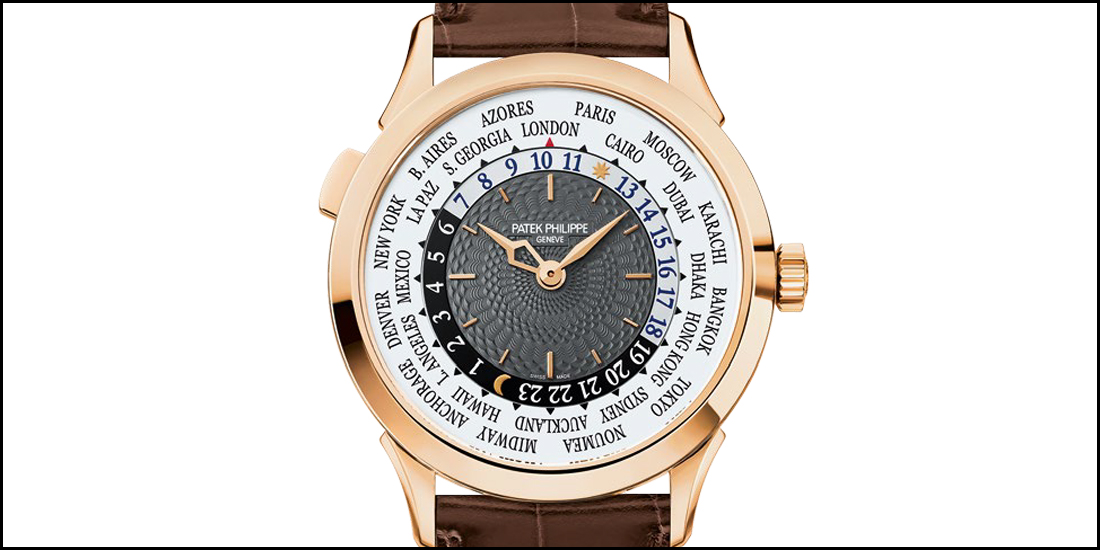
Reference 5230 World Time watch
CASE : 18K white or 5N rose gold, sapphire crystal case back, water-resistant to 30m
DIAMETER : 38.5mm
MOVEMENT : mechanical self-winding (Caliber 240 HU, 48h power reserve), 239 parts, 22K gold microrotor, Patek Philippe Seal decorations
FUNCTIONS : hours, minutes, 24 time zones, day/night
DIAL : three zones, handguilloché center with basket weave pattern
STRAP : hand-stitched alligator with large square scales, shiny black or chocolate brown with Calatrava folding clasp in 18K white or rose gold
The self-winding ultra-thin new reference 5230 exalts 80 years of world time experience
Let’s make one thing clear from the start : the new World Time reference 5230 replaces all the previous World Time models from Patek Philippe, which has now adopted the latest norms in the realm of time zones. As we saw on the previous page, Moscow time has shifted closer to Western Europe by moving to UTC+3 instead of UTC+4, while Dubai has replaced Riyadh, and Buenos Aires has taken over from Rio. The times and locations appearing on this 2016 World Time comply with the latest standards
Fine craftsmanship, ancestral techniques and patented technologies bring the best of the watchmaking world and the hours of the whole world to the wrist.
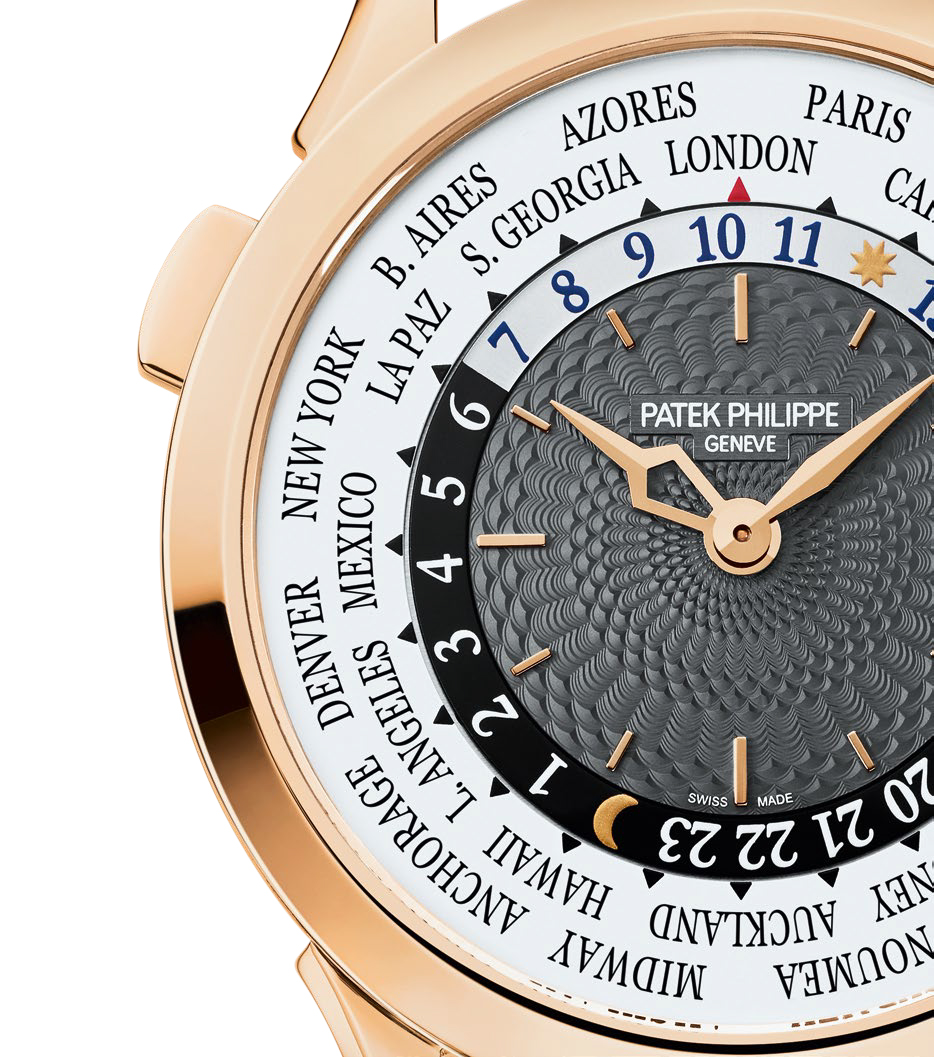 On the other hand, this approach did not prevent the design department, guided by the family owners of the Manufacture, from drawing upon the past for certain decorative details and techniques that tend to have been forgotten by other brands. Patek Philippe collectors will thus perhaps recognize the fine guillochéd basket weave motif inspired by a precious pocket watch from the Patek Philippe Museum, on which the pattern was originally coated with a translucent blue enamel using the flinqué technique. The Manufacture still masters these nearly extinct handcrafts because it has faithfully preserved the skills required within its workshops and passed them on from generation to generation. It has also kept the indispensable tools such as the “tour à flinquer” an almost century-old manually operated rose engine used to create the guilloché dial pattern : a machine meticulously serviced and that works as reliably today as when it was first commissioned. Since respect for traditions is naturally not incompatible with contemporary design, the reference 5230 is distinguished from previous World Time models by a set of subtle changes, such as the winglet-style lugs and the narrow, smoothly polished bezel. In a similar way, the pierced hand inspired by the famous “Southern Cross” constellation replaces the former ringed hours hand, while the minutes hand featuring a lozengeshaped cut-out relegates the Dauphine version that long adorned World Time models to collector’s item status. The two gold hands both feature a sharp central ridge set between two meticulously lapped, beveled flanks.
On the other hand, this approach did not prevent the design department, guided by the family owners of the Manufacture, from drawing upon the past for certain decorative details and techniques that tend to have been forgotten by other brands. Patek Philippe collectors will thus perhaps recognize the fine guillochéd basket weave motif inspired by a precious pocket watch from the Patek Philippe Museum, on which the pattern was originally coated with a translucent blue enamel using the flinqué technique. The Manufacture still masters these nearly extinct handcrafts because it has faithfully preserved the skills required within its workshops and passed them on from generation to generation. It has also kept the indispensable tools such as the “tour à flinquer” an almost century-old manually operated rose engine used to create the guilloché dial pattern : a machine meticulously serviced and that works as reliably today as when it was first commissioned. Since respect for traditions is naturally not incompatible with contemporary design, the reference 5230 is distinguished from previous World Time models by a set of subtle changes, such as the winglet-style lugs and the narrow, smoothly polished bezel. In a similar way, the pierced hand inspired by the famous “Southern Cross” constellation replaces the former ringed hours hand, while the minutes hand featuring a lozengeshaped cut-out relegates the Dauphine version that long adorned World Time models to collector’s item status. The two gold hands both feature a sharp central ridge set between two meticulously lapped, beveled flanks.
Useful function, user-friendly handling
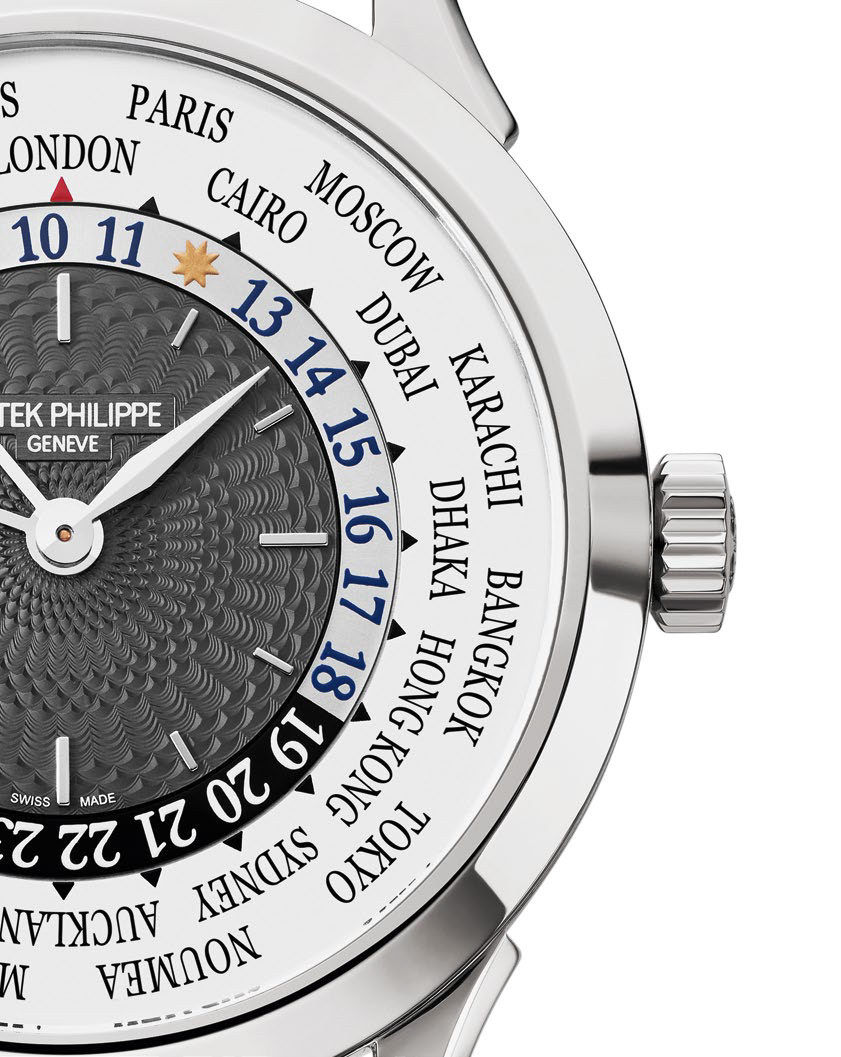 Above and beyond technical prowess and aesthetic mastery, the value of a timepiece is also measured by its smooth handling and the practical role it serves. It is good to be able to check at a glance the time in places where business contacts or friends and family live, or to adjust a watch in a few simple presses to the time zone where a traveler has just landed. The dial center hour hand logically indicates local time in the zone whose assigned city name appears at 12 o’clock. The local times in the 23 other time zones are read off on the 24-hour disk that rotates counterclockwise inside the city disk. The minutes as indicated by the dedicated hand are the same for all time zones. In the same way, when the user arrives in another time zone, he only needs to press the pusher at 10 o’clock as many times as needed to align the respective city name at 12 o’clock. Each time the pusher is pressed, the hours hand advances by hour, while the city disk and the 24-hour ring will move by one-hour increments in the counterclockwise direction. Patek Philippe engineers have succeeded in uncoupling the World Time mechanism from the base movement so as to ensure that the local time zone change that does not disturb the minutes hand or the amplitude of the balance.
Above and beyond technical prowess and aesthetic mastery, the value of a timepiece is also measured by its smooth handling and the practical role it serves. It is good to be able to check at a glance the time in places where business contacts or friends and family live, or to adjust a watch in a few simple presses to the time zone where a traveler has just landed. The dial center hour hand logically indicates local time in the zone whose assigned city name appears at 12 o’clock. The local times in the 23 other time zones are read off on the 24-hour disk that rotates counterclockwise inside the city disk. The minutes as indicated by the dedicated hand are the same for all time zones. In the same way, when the user arrives in another time zone, he only needs to press the pusher at 10 o’clock as many times as needed to align the respective city name at 12 o’clock. Each time the pusher is pressed, the hours hand advances by hour, while the city disk and the 24-hour ring will move by one-hour increments in the counterclockwise direction. Patek Philippe engineers have succeeded in uncoupling the World Time mechanism from the base movement so as to ensure that the local time zone change that does not disturb the minutes hand or the amplitude of the balance.
A caliber perpetually improved over the past 40 years
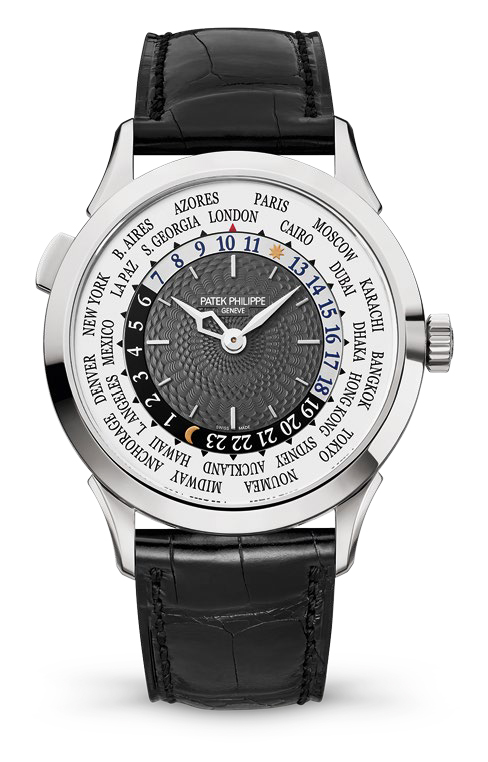 While Patek Philippe’s expertise in the domain of World Time goes back almost 80 years, it currently beats to the rhythm of the legendary Caliber 240 which was built and patented in 1977. This ultra-thin micro-rotor self-winding movement developed by the Manufacture Patek Philippe has made its mark on watchmaking history. Despite the addition of the sophisticated time-zone mechanism on a self-winding caiber that would normally imply a thicker housing, this movement measures a mere 3.88mm thick and thereby fits smoothly inside the slim and elegant lines of the Calatrava case. It owes this to the patented integration of the micro-rotor on the bridge level, with its small diameter compensated by the fact that it is made in solid 22K gold, thereby increasing its mass, its torque and hence its winding performance. In addition, this miniature mechanical marvel has been constantly optimized since 1977 and is now distinguished by a patented Spiromax® balance spring made from a silicon derivative named Silinvar®. This ensures a high degree of accuracy exceeding customary timekeeping standards and complying – like all the other movement characteristics – with the Patek Philippe Seal requirements. The bridges are chamfered and adorned with “Côtes de Genève”. The gold mini-rotor also bears the same Geneva striping, along with an engraved Calatrava cross, the emblem of the Manufacture. The baseplate is circular-grained by hand and the gilt brass wheel spokes are countersunk and chamfered. Such superlative refinement on both sides of the case is truly exceptional, from one end of the earth to the other.
While Patek Philippe’s expertise in the domain of World Time goes back almost 80 years, it currently beats to the rhythm of the legendary Caliber 240 which was built and patented in 1977. This ultra-thin micro-rotor self-winding movement developed by the Manufacture Patek Philippe has made its mark on watchmaking history. Despite the addition of the sophisticated time-zone mechanism on a self-winding caiber that would normally imply a thicker housing, this movement measures a mere 3.88mm thick and thereby fits smoothly inside the slim and elegant lines of the Calatrava case. It owes this to the patented integration of the micro-rotor on the bridge level, with its small diameter compensated by the fact that it is made in solid 22K gold, thereby increasing its mass, its torque and hence its winding performance. In addition, this miniature mechanical marvel has been constantly optimized since 1977 and is now distinguished by a patented Spiromax® balance spring made from a silicon derivative named Silinvar®. This ensures a high degree of accuracy exceeding customary timekeeping standards and complying – like all the other movement characteristics – with the Patek Philippe Seal requirements. The bridges are chamfered and adorned with “Côtes de Genève”. The gold mini-rotor also bears the same Geneva striping, along with an engraved Calatrava cross, the emblem of the Manufacture. The baseplate is circular-grained by hand and the gilt brass wheel spokes are countersunk and chamfered. Such superlative refinement on both sides of the case is truly exceptional, from one end of the earth to the other.
See also : Patek Philippe – World Time Chronograph 5930



